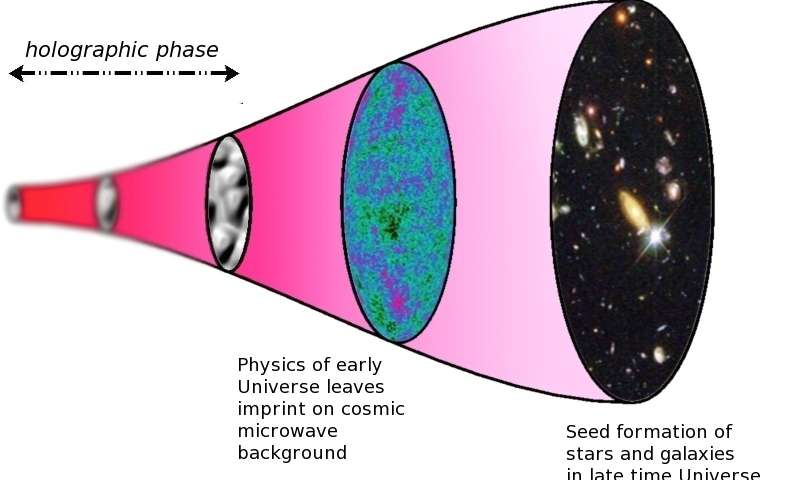Well here’s some eye-opening news. Everything we see and feel may be part of a vast illusion, according to a new study from a group of theoretical physicists and astrophysicists. Writing in the journal Physical Review Letters , scientists from the University of Southampton (UK), University of Waterloo (Canada), Perimeter Institute (Canada), INFN, Lecce (Italy), and the University of Salento (Italy) came to this conclusion while studying irregularities in the cosmic microwave background (CMB). This is also known as the “afterglow” of the Big Bang.

It was in the 1990s when the theory of a holographic universe was first introduced, arguing that everything making up our 3D reality and time, from massive stars to tiny atoms, is set in a 2D plain. As extreme as it is, the theory was recently revisited and looked over carefully. Researchers said there is as much evidence for this belief as for traditional explanations for irregularities.
“Imagine that everything you see, feel, and hear in three dimensions, and your perception of time, in fact, emanates from a flat two-dimensional field,” professor Kostas Skenderis of mathematical sciences at the University of Southampton told phys.org. “The idea is similar to that of ordinary holograms where a three-dimensional image is encoded in a two-dimensional surface, such as in the hologram on a credit card. However, this time, the entire universe is encoded.”
Although not an example with holographic properties, this could be thought of as rather like watching a 3D film in a movie theater. We see the pictures as having height, width, and depth — when, in fact, it all originates from a flat 2D screen. The difference in our 3D universe is that we can touch objects and, from our perspective, the projection is real.
In recent decades, advances in telescopes and sensing equipment have allowed scientists to detect a vast amount of data hidden in the white noise or microwaves (which are partly responsible for the random black and white dots you see on an un-tuned TV) left over from the moment the universe was created. Using this information, the team of researchers made complex comparisons between networks of features in the data and quantum field theory. Impressively, they found that some of the simplest quantum field theories could explain nearly all cosmological observations of the early universe.
“Holography is a huge leap forward in the way we think about the structure and creation of the universe,” said Skenderis. “Einstein's theory of general relativity explains almost everything large scale in the universe very well, but starts to unravel when examining its origins and mechanisms at quantum level.”
According to Skenderis, scientists have been working for decades to combine Einstein's theory of gravity and quantum theory. Some believe the concept of a holographic universe has the potential to reconcile the two.
Now the scientists are hoping that their study is the key to further their understanding of the early universe, and explains how space and time emerged.
Advertisement
Learn more about Electronic Products Magazine





